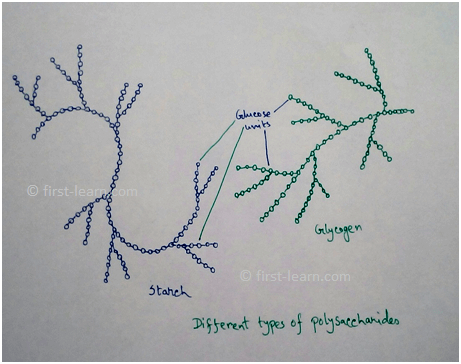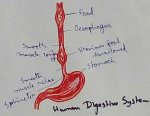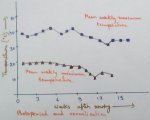Polysaccharides
Definition of Polysaccharides: Polysaccharides are huge carbohydrate molecules which is made up of multiple number of monosaccharide with the help of glycosidic bond. They can be branched or unbranched. Examples of polysaccharides glycogen, starch etc.
Types of Polysaccharides:
According to the role of polysaccharides, it can be of three types-
1. Storage polysaccharides - These type of polysaccharides act as food storage for further use. They are of different types-
Glycogen- It is the polysaccharides which is found in liver and muscle. Carbohydrates are stored as glycogen in animals. It is also called animal starch. There are 40,000 glucose molecules attached with each other in glycogen and molecular weight is 4.8 million. Monosaccharides are arranged in a row by 1-4 alpha glycosidic linkage and branching are observed where 1-6glycosidic linkage is present.
Starch- Starch are polyglucan homopolysaccharides that act as the end product of the photosynthesis. It is the form in which extra glucose remain stored in the chloroplasts or leucoplast. When food and energy is required it is dissociated and supplied to different parts of the plant. It is made up of amylose and amylopectin and are of two types-
Inulin- These type of polysaccharides stored in the roots or bulb of Dahlia. These polysaccharides are not digested by our body.
2. Structural Polysaccharides: These type of polysaccharides act as the structural components of the plant or animals.
Chitin- These are made up of heteropolysaccharides and are second abundant polysaccharides in animals. It is found to form the outer covering of fungi and the arthropods. These provide strength and elasticity. It becomes hard when there is precipitation of calcium carbonate. Different monomers are arranged in a line with the bonding of 1-4beta glycosidic linkage.
Cellulose- It is the most abundant polysaccharides found in the plant. It is one of the major components of cell wall. Here glucose molecules are arranged in 1-4beta glycosidic bond. It provides almost 90%
3. Mucosubstances: These are the substances which act as components for the formation of slimy substances. They are generally made up of carbohydrates and protein. They are called glycoprotein.
Functions of polysaccharides:
1. Acts as storage- Different types of polysaccharides are there in plants and in animals which act as source of energy and storage of food . Examples of this type of polysaccharides are starch which keep extra glucose in plants for their future use when there will be no production of glucose.
2. Responsible for different structures of the molecules: These type of polysaccharides play role in the formation of the skeleton of animals or the tensile fibres of the plant. Examples are cellulose acts as the fibre of plant which homopolysaccharides.
3. Act as source of different molecules: Polysaccharides like cellulose act as source of different fibres.
4. Provide source of energy: In human beings we all know that carbohydrates provide instant energy to the body. Excess glucose stored as glycogen in liver and muscle. During the muscular activities or physiological activities this glycogen provide energy to the body.
5. Dietary food: Different polysaccharides act as dietary food for animals, human etc.
From Polysaccharides to HOME PAGE
Recent Articles
-
Eleventh Grade | Eleventh Grade Science | Eleventh Grade Math
Jun 27, 25 12:26 AM
Eleventh grade biology has been designed in accordance with the recommended topics. We will cover all the topics in biology very exciting and interesting way. -
Explain Digestion of Food | Salivary Glands | Oesophagus | Stomach
Jun 27, 25 12:20 AM
Before the digestion is start by the different enzymes secreted from the different digestive glands food must be turned and chut or mixed with saliva inside the mouth. -
Explain Human Digestive System | Mouth | Tongue | Pharynx | Teeth
Jun 21, 25 01:15 PM
Digestive system is a system of alimentary canal and digestive glands. Alimentary canal- alimentary canal is a tube of variable diameter having muscular wall and glandular epithelial tissues which sta… -
Vernalisation in Plants | Definition | Mechanism | Devernalization |
Jun 18, 25 01:34 PM
Definition of vernalisation- The change of flowering habit due to the low temperature treatment is known as vernalisation. This is a physiological process which was denoted by Clipart in 1857 invite b… -
The Food We Eat | Food we Get from Plants and Animals | Carbohydrates
Jun 15, 25 03:20 PM
What are the food that we should eat? Find out the names of ten food items in the word maze. Write the names in the correct column of the table given below. Food we get from plants Food we get from an…













New! Comments
Have your say about what you just read! Leave me a comment in the box below.